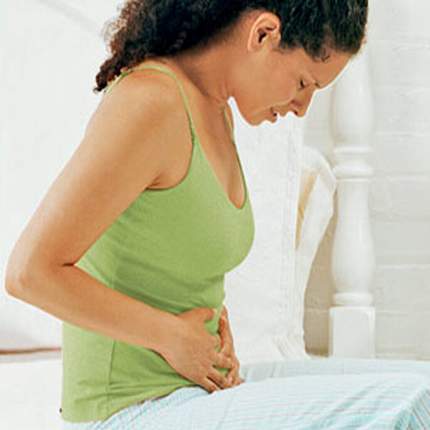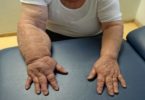What's in this article?
What is Dysmenorrhea?
Dysmenorrhea is the medical term for the painful cramps that may occur immediately before or during the menstrual period. There are two types of dysmenorrhea: primary dysmenorrhea and secondary dysmenorrhea.
Primary dysmenorrhea is another name for common menstrual cramps. Cramps usually begin one to two years after a woman starts getting her period. Pain usually is felt in the lower abdomen or back. They can be mild to severe. Common menstrual cramps often start shortly before or at the onset of the period and continue one to three days. They usually become less painful as a woman ages and may stop entirely after the woman has her first baby.
Secondary dysmenorrhea is pain caused by a disorder in the woman’s reproductive organs. These cramps usually begin earlier in the menstrual cycle and last longer than common menstrual cramps.
What Are the Causes of Dysmenorrhea?
There may not be an identifiable cause of your painful menstrual periods. Certain women are at a higher risk for having painful menstrual periods. Risk factors include:
- being under age 20
- having a family history of painful periods
- smoking
- having heavy bleeding with periods
- having irregular periods
- never having had a baby
- having experienced early puberty, which is puberty before the age of 11
Hormone-like substances called prostaglandins trigger muscle contractions to help your uterus expel its lining each month. These contractions can cause pain and inflammation. Women with higher levels of prostaglandins may experience more severe menstrual cramping and pain. (Mayo Clinic)
In some cases, such as with secondary dysmenorrhea, painful menstrual periods can be the result of an underlying medical condition, such as:
- premenstrual syndrome (PMS)
- endometriosis (a painful medical condition in which cells from the lining of the uterus grow in other parts of the body)
- fibroids in the uterus (noncancerous tumors)
- pelvic inflammatory disease, an infection of the uterus, fallopian tubes, or ovaries often caused by sexually transmitted infections
- sexually transmitted infections (STIs)
- adenomyosis, a rare condition in which the uterine lining grows into the muscular wall of the uterus
- cervical stenosis, a rare condition in which the cervix is so small it slows menstrual flow (NLM)
Certain types of birth control, specifically intrauterine devices (IUDs) made of copper, are associated with increased pain during menstruation.
What are the symptoms of dysmenorrhea?
- Aching pain in the abdomen (pain may be severe at times)
- Feeling of pressure in the abdomen
- Pain in the hips, lower back, and inner thighs
Home Care Treatment of dysmenorrhea
The following steps may allow you to avoid prescription medications:
- Apply a heating pad to your lower belly area, below your belly button. Never fall asleep with the heating pad on.
- Do light circular massage with your fingertips around your lower belly area.
- Drink warm beverages.
- Eat light but frequent meals.
- Follow a diet rich in complex carbohydrates such as whole grains, fruits, and vegetables, but low in salt, sugar, alcohol, and caffeine.
- Keep your legs raised while lying down, or lie on your side with your knees bent.
- Practice relaxation techniques such as meditation or yoga.
- Try over-the-counter anti-inflammatory medicine, such as ibuprofen. Start taking it the day before your period is expected to start, and continue taking it regularly for the first few days of your period.
- Try vitamin B6, calcium, and magnesium supplements, especially if your pain is from PMS.
- Take warm showers or baths.
- Walk or exercise regularly, including pelvic rocking exercises.
- Lose weight if you are overweight. Get regular, aerobic exercise.
If these self-care measures do not work, your doctor may prescribe medications such as:
- Antibiotics
- Antidepressants
- Birth control pills
- Prescription anti-inflammatory medicines
- Prescription pain relievers (including narcotics, for brief periods)





